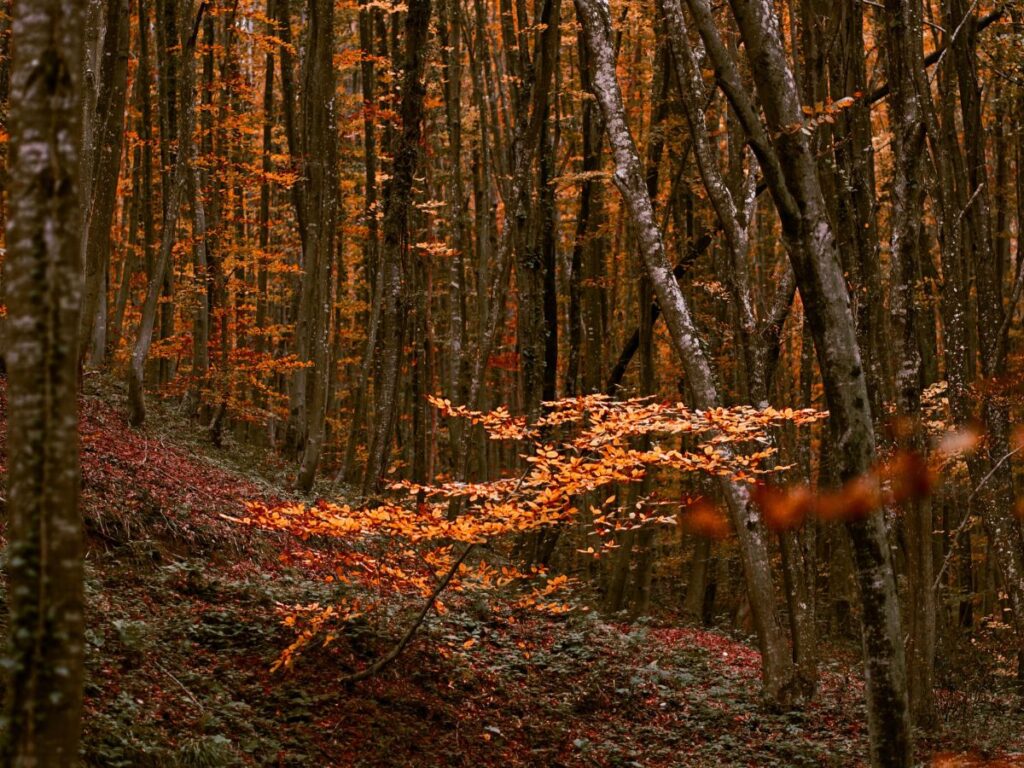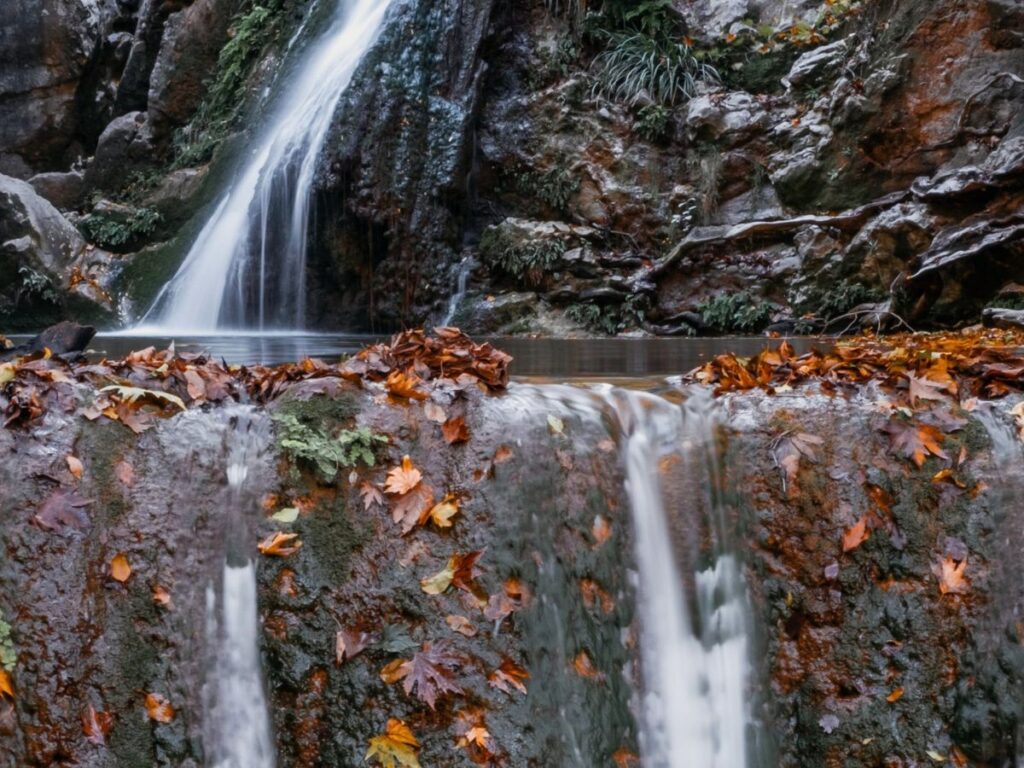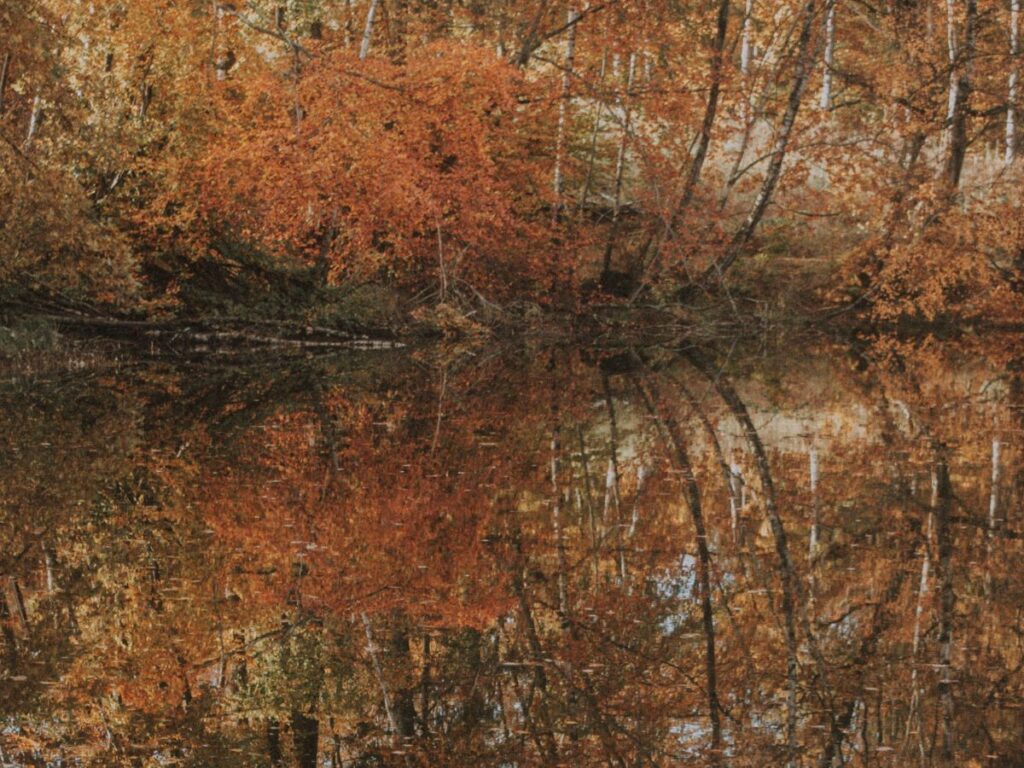Nestled within the heart of California’s Sierra Nevada Mountains, Yosemite National Park stands as a testament to nature’s awe-inspiring grandeur. Spread over nearly 1,200 square miles, the park boasts a stunning array of landscapes, from its iconic granite cliffs like El Capitan and Half Dome to its cascading waterfalls, clear streams, and diverse flora and fauna. However, while Yosemite is a year-round haven for nature lovers, there’s something particularly enchanting about the park during the fall.
As the seasons shift and the summer crowds disperse, the park transforms. Fall blankets Yosemite in a warm, golden hue. Trees, especially in the park’s lower elevations, begin their dramatic change, presenting a mesmerizing palette of oranges, yellows, and reds. The crisp air offers clearer skies, the valleys resonate with a calm serenity, and the wildlife prepares for the oncoming winter, making it a unique time for visitors to truly connect with the park.
Through this blog post, our objective is to take you on a virtual journey of Yosemite during this splendid season. We aim to paint a vivid picture of what the park feels and looks like in fall, and provide valuable insights for those considering a visit during this magical time. By the end of the article, we hope to leave you not only informed but also inspired to experience Yosemite’s autumnal wonder for yourself.
The Transformation of Scenery
Yosemite National Park, with its expansive landscapes, undergoes a poetic metamorphosis as summer gives way to fall. The park’s vast meadows, towering cliffs, and deep valleys all resonate with the gentle touch of autumn. This transformation isn’t just a shift in colors, but also in ambiance: cooler temperatures, softer sunlight, and a quieter atmosphere as the bustling summer crowds thin out.

Fall Foliage
One of Yosemite’s most captivating transformations in the fall is the changing colors of its foliage. A canvas of greens gradually turns into a vibrant mix of golds, reds, and oranges. Key trees contributing to this visual feast include black oaks, Pacific dogwoods, and bigleaf maples. Their leaves transform, creating a mosaic of warm colors that beautifully contrast with the park’s evergreen conifers. Some of the most striking viewpoints to witness this spectacle include the Yosemite Valley, especially around the El Capitan Meadow and the Merced River’s banks. Another notable spot is the Tioga Pass, where the elevation brings a different hue to the foliage. Typically, the colors start their transformation in late September, reaching their zenith in mid to late October. However, exact timings can vary based on the year’s climate conditions.
Waterfalls
Fall brings a subdued yet elegant charm to Yosemite’s waterfalls. The roaring cascades of spring, fueled by snowmelt, transform into gentler flows or even dry out as the year progresses. The intense water flow witnessed during spring and early summer, due to the melting snow, reduces significantly by the time fall arrives. Many of the waterfalls, especially those at higher elevations, might have a reduced flow or could be completely dry. While the volume of water is less, the beauty remains undiminished. Bridalveil Fall and Vernal Fall are still impressive sights, with the surrounding foliage enhancing their appeal. The reduced mist and cooler temperatures can also make the hikes to these waterfalls more comfortable.
Wildlife
As Yosemite transitions into fall, its wildlife begins preparing for the oncoming winter, offering unique viewing opportunities for visitors. Deer are commonly seen grazing in the meadows, especially during the early mornings and late afternoons. Black bears, preparing for hibernation, might be spotted more frequently as they forage extensively. Smaller creatures like squirrels and chipmunks are also active, gathering food for the colder months. It’s crucial for visitors to maintain a safe distance from all wildlife, especially from bears. Never approach or feed animals. Store food and scented items properly, preferably in bear-proof containers, to avoid attracting them to campgrounds or picnic areas. Remember, the park is their home, and it’s our responsibility to respect their space.
Weather and What to Pack
Visiting Yosemite in the fall offers an excellent blend of cooler temperatures, fewer crowds, and the park’s natural beauty. However, with the season’s unpredictability, it’s essential to be prepared. Let’s delve into the weather specifics and a recommended packing list for a fall visit to Yosemite.
Weather Conditions
Average Temperature and Conditions in Fall: Fall in Yosemite sees a noticeable drop in temperature from the warmer summer months. On average, daytime temperatures can range from the mid-60s to the mid-70s Fahrenheit in early fall, dipping to the 50s or even lower as winter approaches. Nights can be chillier, with temperatures sometimes dropping close to freezing, especially in higher elevations.
Weather Variation from September to November: September often still retains some of summer’s warmth, with mostly clear skies. October brings a more pronounced coolness, especially towards its end. By November, there’s a palpable crispness in the air, with the potential for early snowfalls, particularly in the park’s higher regions.

Packing List
For an enjoyable and safe experience in Yosemite during the fall, being adequately equipped is paramount.
- Quick showers are not uncommon, so pack a lightweight, waterproof jacket or poncho.
- Gloves, scarves, and beanies can be vital, especially during early mornings or late evenings.
- Given the temperature fluctuations, it’s advisable to wear layers that can be added or removed as needed.
- Opt for moisture-wicking base layers, a fleece or warm mid-layer, and a water-resistant outer layer.
- Waterproof hiking boots with good ankle support are essential for those planning to hit the trails.
- A day pack to carry water, snacks, and other essentials during hikes.
- Despite the cooler weather, the sun can still be intense. Pack sunglasses, a wide-brimmed hat, and sunscreen.
- A map of the park, a compass, or a GPS can be beneficial, especially if venturing into lesser-known areas.
Activities to Do in Fall
Fall in Yosemite National Park offers a unique ambiance. With the changing foliage and crisp air, this season provides a range of activities tailored to those seeking both adventure and relaxation. Here are some of the most popular activities to consider:
Leaf-Peeping: Witness the tapestry of vibrant colors as trees like black oaks and bigleaf maples transition for the winter.
Picnicking: With fewer crowds and mild temperatures, fall is an ideal time to enjoy an outdoor meal amidst nature.
Stargazing: The clearer fall skies present an excellent opportunity for stargazing, especially in areas away from light pollution.
Nature Walks: Engage in leisurely walks amidst the park, breathing in the fresh, cool air and enjoying the tranquillity.
Birdwatching: With the onset of fall, watch the migratory patterns of various bird species as they pass through the park.
Biking: Explore the park’s scenic routes with a refreshing bike ride, taking advantage of the cooler temperatures.
Rock Climbing: For enthusiasts, the cooler fall temperatures make rock climbing more comfortable, especially on sun-exposed routes.
Hiking Trails
Yosemite’s extensive trail network is especially inviting during the fall, offering diverse experiences based on skill levels:
Mariposa Grove of Giant Sequoias: Experience the majestic giant sequoias amidst the fall ambiance. (Skill Level: Easy to Moderate)
Mist Trail: While the water flow is lesser, the trail provides fantastic views of Vernal and Nevada Falls, painted against a backdrop of fall colors. (Skill Level: Moderate to Strenuous)
Tioga Pass Road Trails: These trails, located at higher elevations, provide a different fall color palette and might even give early glimpses of snow. (Skill Level: Varies, from Easy to Strenuous)
Each trail’s difficulty varies, from gentle paths suitable for families to more challenging hikes for experienced adventurers. Always check trail conditions and advisories, and choose trails that align with your experience and comfort level.
Photography
Yosemite in fall is a photographer’s paradise. With the landscape awash with colors and the interplay of light and shadow, the park offers countless photographic opportunities.
El Capitan Meadow: A vantage point offering a beautiful blend of meadows, fall foliage, and the towering El Capitan.
Tunnel View: Capture the iconic view of Yosemite Valley adorned in fall colors, with El Capitan, Half Dome, and Bridalveil Fall in the frame.
Merced River: The calm waters offer reflective views of the surrounding foliage and cliffs.
Photography Tips Specific to Yosemite in Fall
- To capture the landscape bathed in a soft, warm glow, shoot during the golden hours—shortly after sunrise and just before sunset.
- These can help reduce reflections and make the sky pop, enhancing the vibrancy of fall colors.
- Use the colorful leaves as a foreground or frame to add depth and context to your shots.

Camping
The joy of camping amidst Yosemite’s fall colors is an experience unlike any other, with the natural world right outside your tent.
Yosemite Valley: Campgrounds like Upper Pines remain open throughout the fall. However, some sites, like Lower Pines and North Pines, usually close in October.
Wawona: Typically open until early November.
Hodgdon Meadow: Open all year, this campsite is perfect for those who love a cooler camping environment.
Booking and Reservation Tips:
- Yosemite’s campsites, even in fall, can fill up quickly. It’s wise to book months in advance.
- Regularly visit the National Park Service’s website to see any last-minute cancellations or availability updates.
- Ensure that you are aware of any specific regulations, especially those related to wildlife and fires.
Stargazing
Yosemite’s vast expanse of wilderness, away from the bright lights of cities, offers an impeccable canvas for stargazers.
The clear skies of fall, devoid of the summer haze, offer a more transparent view of the cosmos. With less moisture and pollution in the air, stars appear brighter, and celestial objects are more discernible. Fall also ushers in a shift in the night sky, bringing forth constellations and celestial events not visible during other seasons. Watch out for meteor showers that occasionally grace the autumn nights. The cooler temperatures reduce the distortion caused by the Earth’s atmosphere, allowing for sharper views of distant stars and galaxies.
For the best stargazing experience, find a spot away from artificial lights, lay back, and let the universe unveil its mysteries right above you.
Events and Festivals
Fall in Yosemite is not only about nature’s colorful canvases and outdoor adventures; it’s also a season that showcases the rich tapestry of local culture and park traditions. Here’s a snapshot of what to expect when it comes to events and festivals during this season:
Yosemite Fall Festival: Typically held in October, this festival is a celebration of the autumn season, bringing together local artisans, musicians, and food vendors. Visitors can enjoy crafts, live music, and local delicacies against the backdrop of Yosemite’s fall scenery.
Mariposa Butterfly Festival: Though it takes place in spring, it’s worth mentioning for those planning an extended stay. Celebrating Mariposa’s name, which means “butterfly” in Spanish, this festival showcases the region’s butterfly species and features parades, live entertainment, and more.
Park Events
Every season, Yosemite National Park hosts various programs and events that engage visitors. Participating in these festivals and programs can enrich one’s understanding and appreciation of the park and its surrounding communities. Always check the park’s official website or local event calendars for the most up-to-date information on dates, times, and locations.
Ranger-led Programs: Fall sees a series of ranger-led programs tailored to the season. From nature walks that explore the changing foliage to evening campfire programs discussing Yosemite’s history and wildlife, these programs are both educational and entertaining.
Yosemite Facelift: An annual event, usually held at the end of September, where volunteers gather to clean up the park after the busy summer season. It’s an excellent opportunity for visitors to give back to the park and ensure its beauty remains unspoiled.
Star Gazing Sessions: Capitalizing on the clear fall skies, some ranger programs are dedicated to stargazing. Rangers guide visitors through the constellations, planets, and other celestial wonders visible from Yosemite.

Tips and Best Practices
Visiting Yosemite National Park in the fall can be a mesmerizing experience, but ensuring a seamless trip requires some preparation and knowledge. Here are some tips and best practices to keep in mind for a delightful and safe visit during this season:
- While fall witnesses fewer crowds compared to the bustling summer, weekends, especially during peak foliage, can still be busy.
- October, particularly, sees a higher influx of visitors keen on experiencing Yosemite’s autumn hues.
- It’s a good practice to book accommodations several months in advance, especially if you’re planning to stay within the park.
- If accommodations within Yosemite are full, consider staying in nearby towns like Mariposa or Oakhurst.
- Check the reservation system regularly, as there can be last-minute cancellations, especially in park lodgings.
Safety Measures
- With fallen leaves covering trails, they can be slippery. Always wear shoes with good grip and tread cautiously.
- Fall weather can be unpredictable. Be prepared for sudden temperature drops, especially if hiking in higher elevations.
- As animals prepare for winter, they can be more active. Always maintain a safe distance and store food securely to avoid attracting wildlife to camping areas.
- Always carry a basic first-aid kit. It should include band-aids, antiseptic wipes, blister treatment, pain-relievers, and any personal medications.
- In case of emergencies, dial 911. Additionally, acquaint yourself with the nearest ranger stations and their operational hours. Keep a list of park-specific emergency contact numbers handy.
Key Takeaways
- Yosemite in the fall is a visual feast, with vibrant foliage, transforming scenery, and unique opportunities to view both wildlife and starlit skies.
- Fall weather in Yosemite can vary from mild temperatures in September to chilly days in November. Packing layers and preparing for unpredictable conditions is crucial.
- Fall offers an array of activities from hiking on lesser-crowded trails to capturing the beauty of the park through photography.
- Attending ranger-led programs, participating in local festivals, and understanding park-specific events can enrich the visitor experience.
- Due to the popularity of the park during peak foliage, early reservations for accommodations are recommended. Always be aware of trail conditions and wildlife activity.
- The fall season brings its set of safety considerations, from slippery trails covered in leaves to active wildlife. Having a first-aid kit and knowing emergency contacts is essential.
- Yosemite in the fall offers a unique blend of natural wonders and cultural richness. Making the most of your visit means embracing both the scenery and the shared experiences the park and its surrounding communities offer.
FAQs
- How busy is Yosemite in the fall?
While less crowded than summer, weekends in October can still see a significant number of visitors. - Do I need to book accommodations in advance for a fall visit?
Yes, early reservations are recommended, especially if staying within the park. - How does fall weather in Yosemite typically behave?
Weather can vary from mild in September to chilly in November, with occasional rain showers. - What’s the best way to view the stars in Yosemite during fall?
Clear fall skies offer excellent stargazing. Popular spots include Glacier Point and open meadows. - What skill level is required for hiking in Yosemite during fall?
Yosemite offers trails for all skill levels, but always check trail conditions and recommendations before heading out. - Is it safe to drink water from the streams?
No, always treat or filter natural water sources before drinking. - Where can I learn about the cultural events happening in the fall?
The park’s visitor centers and official website provide information on cultural events and ranger-led programs. - Can I expect snow in Yosemite during the fall?
While rare, early snowfalls can occur in late November, especially at higher elevations. - Are campfires allowed in the park during the fall?
Campfires are typically allowed, but always check current fire restrictions before your visit. - Are pets allowed on trails during the fall?
Pets are not allowed on most trails, but there are specific pet-friendly areas within the park.
